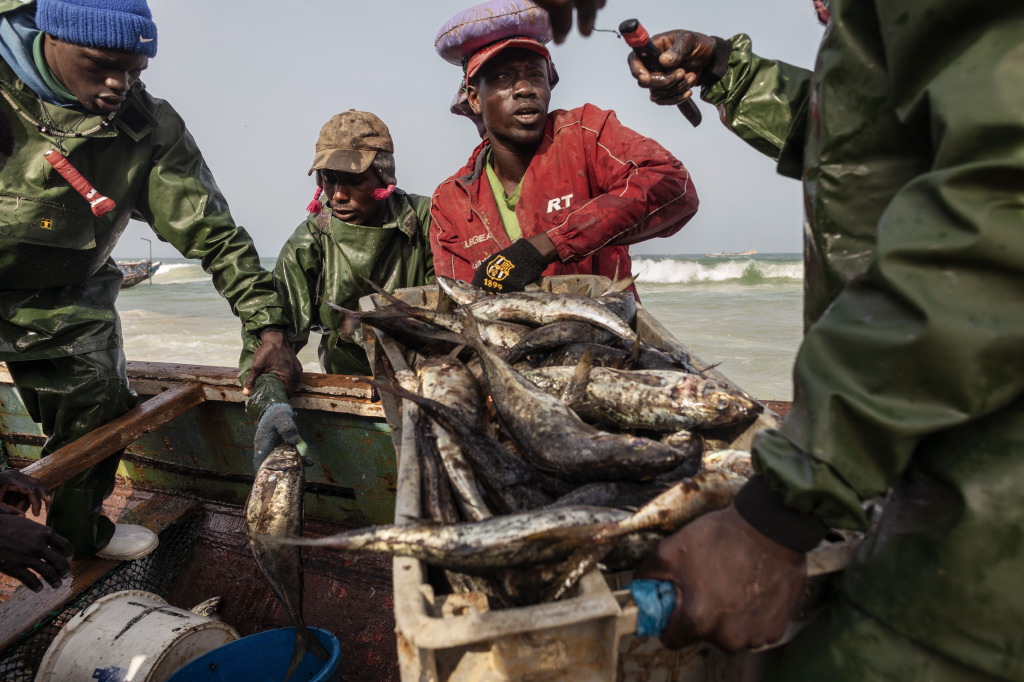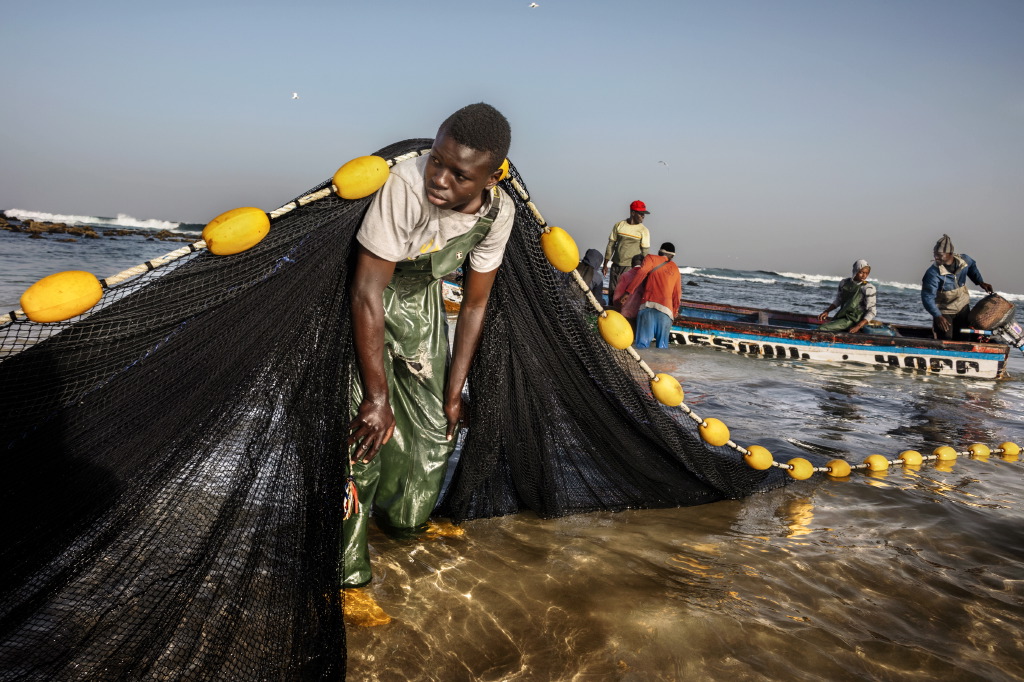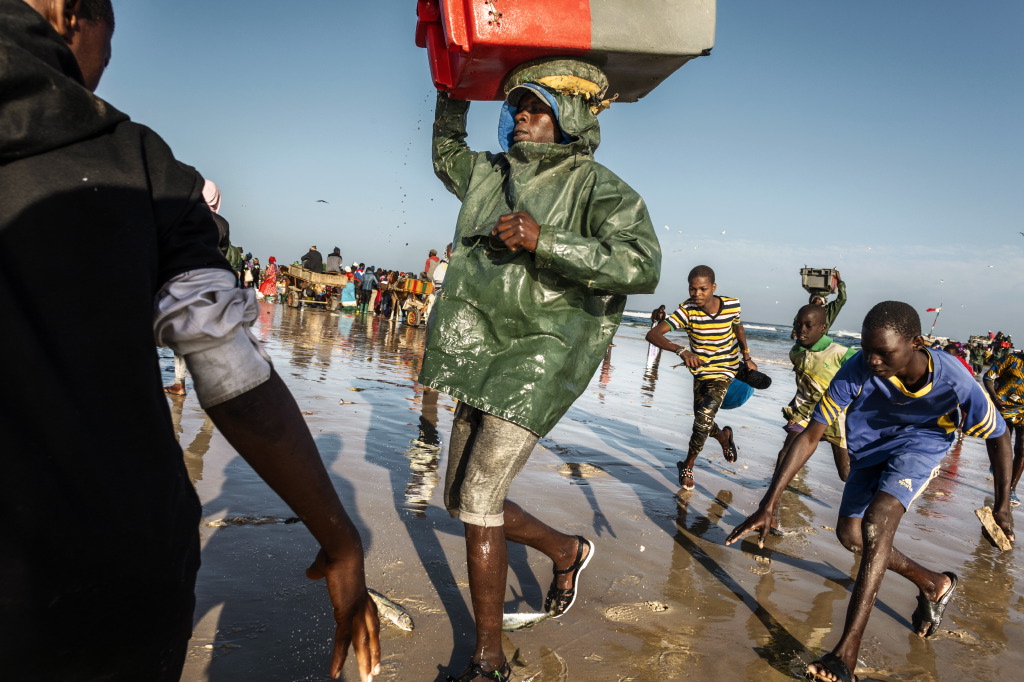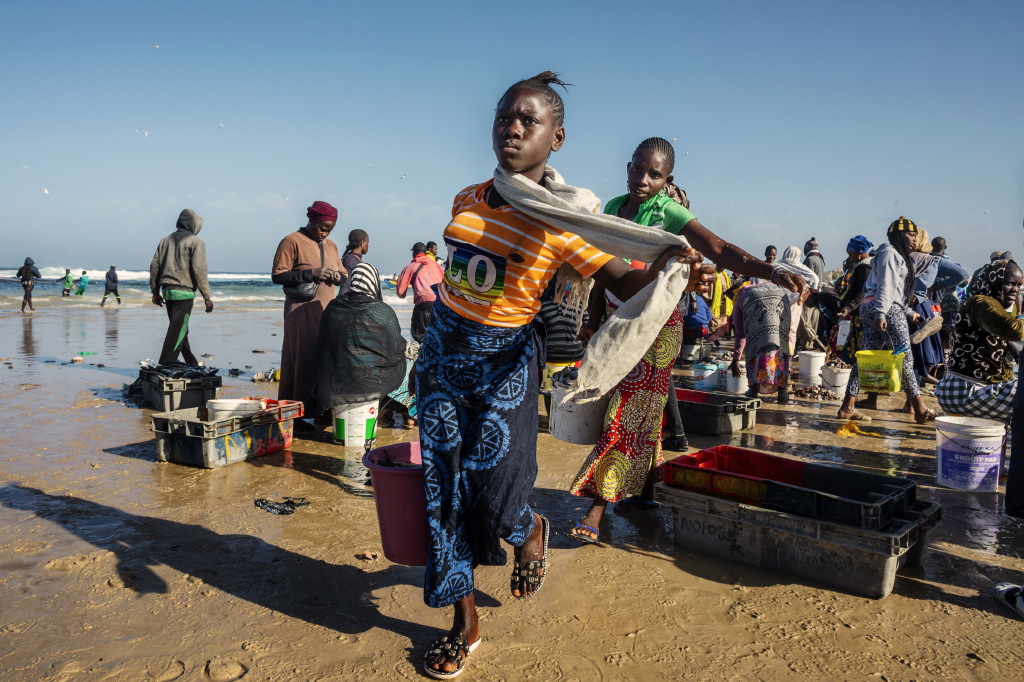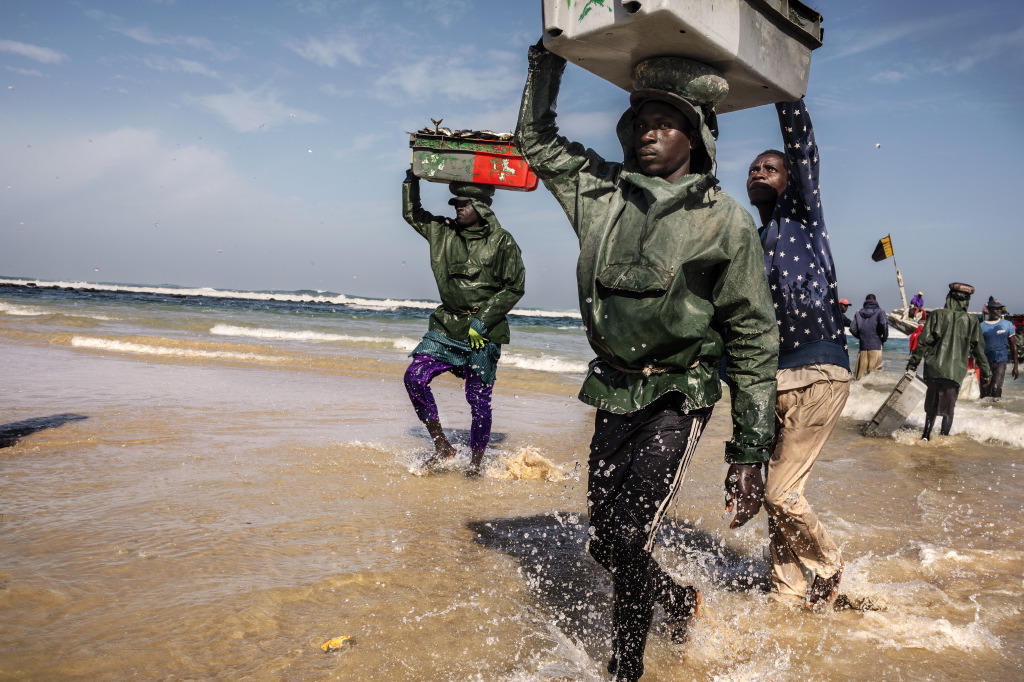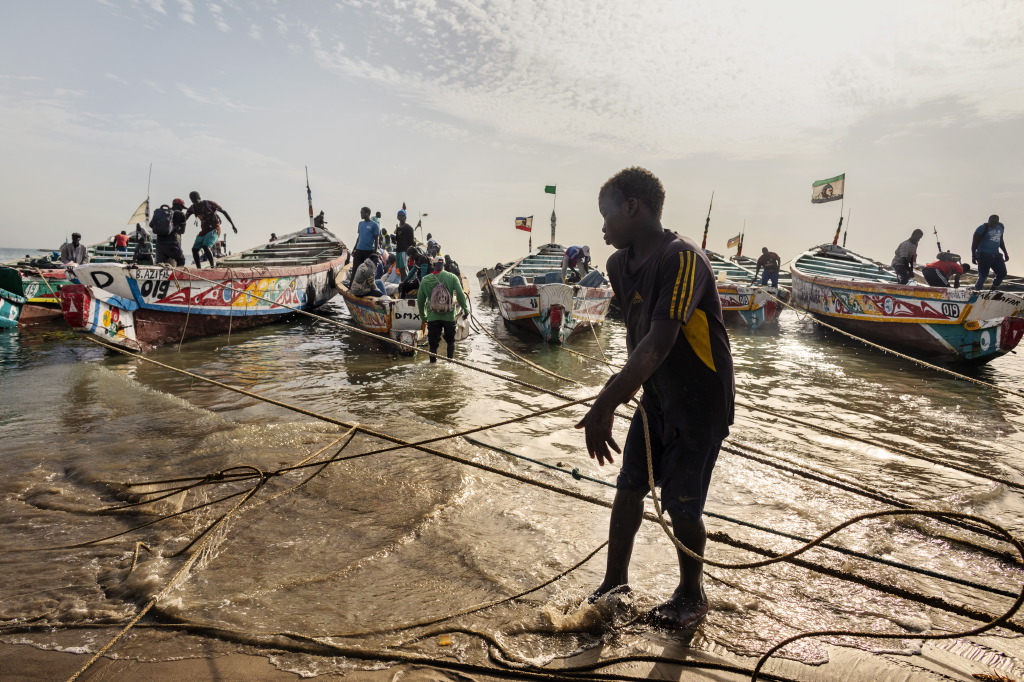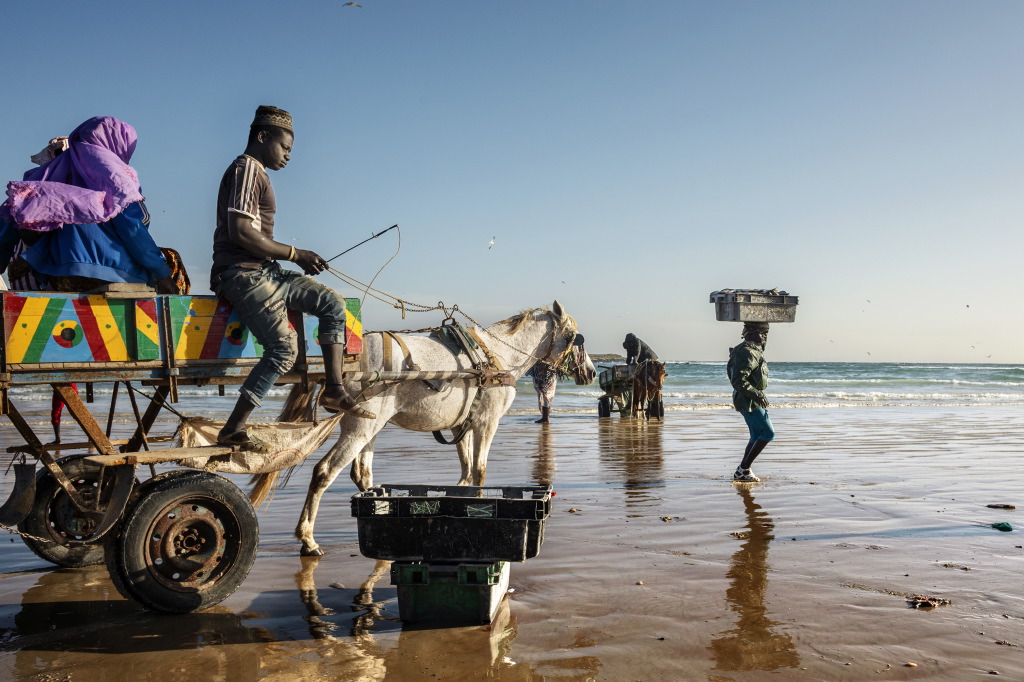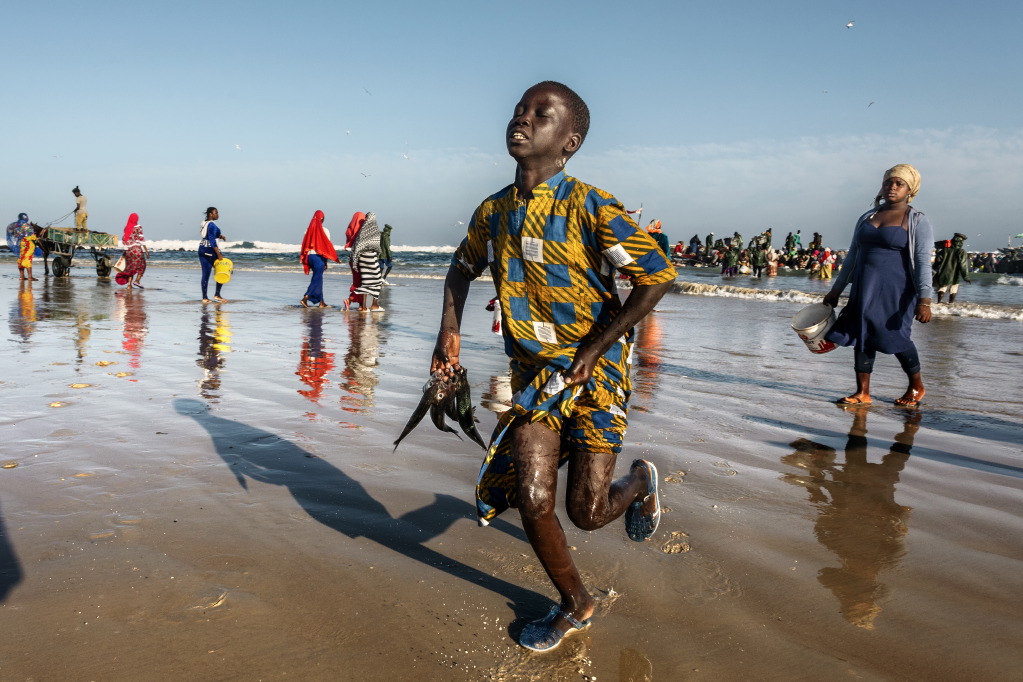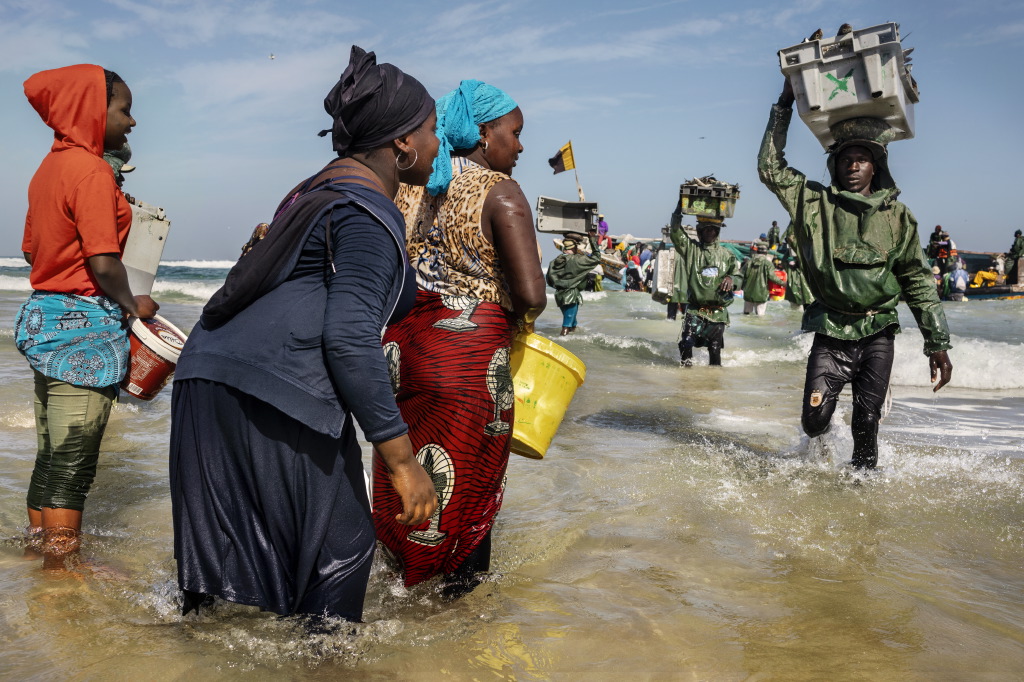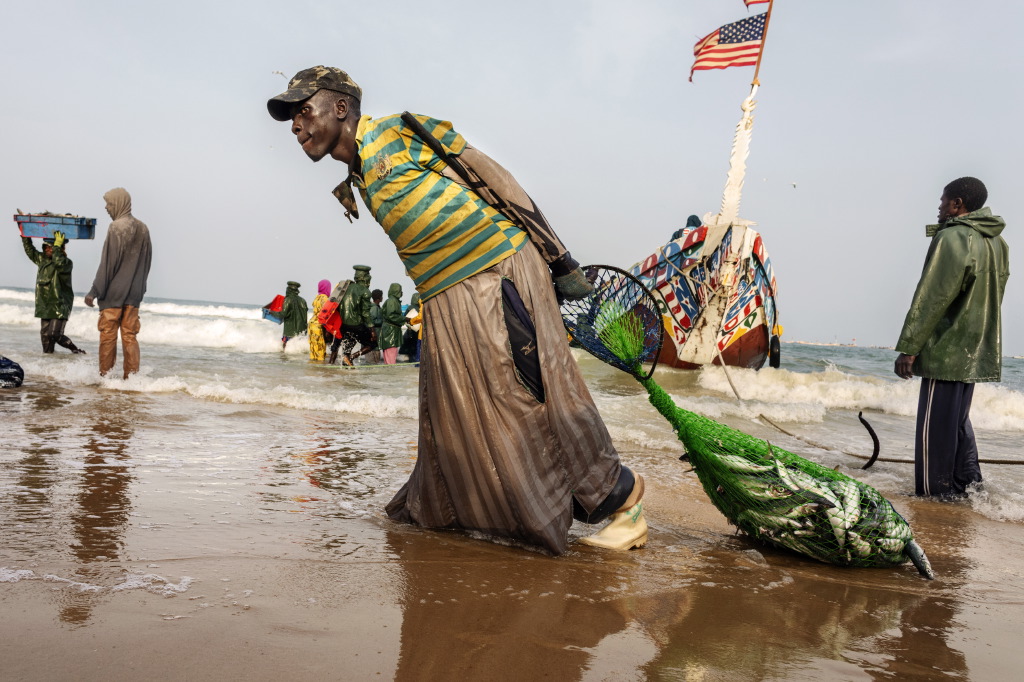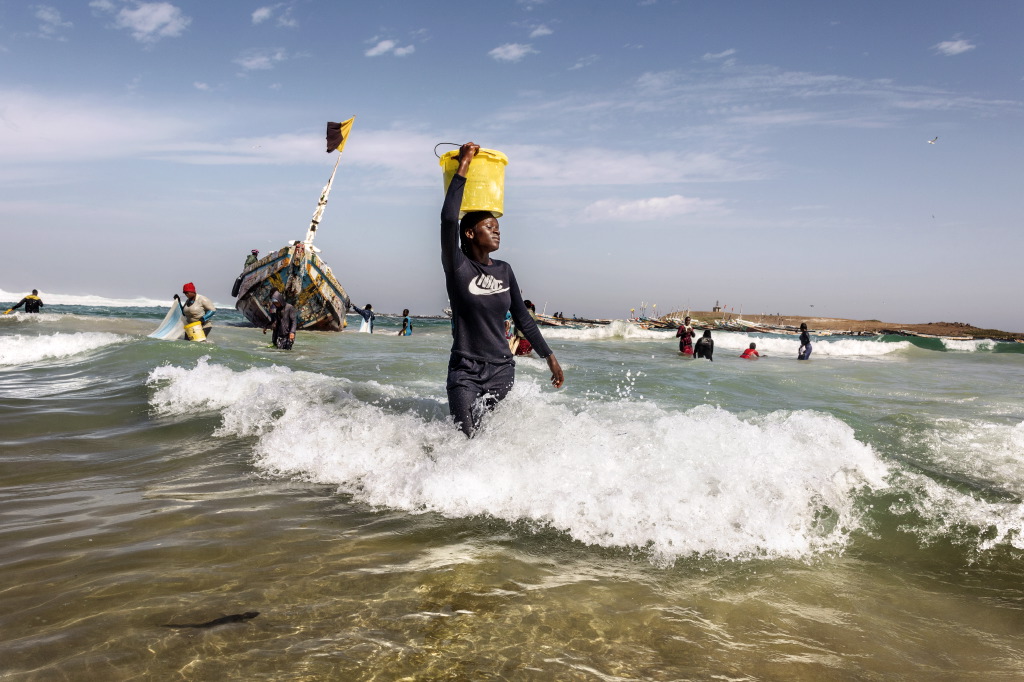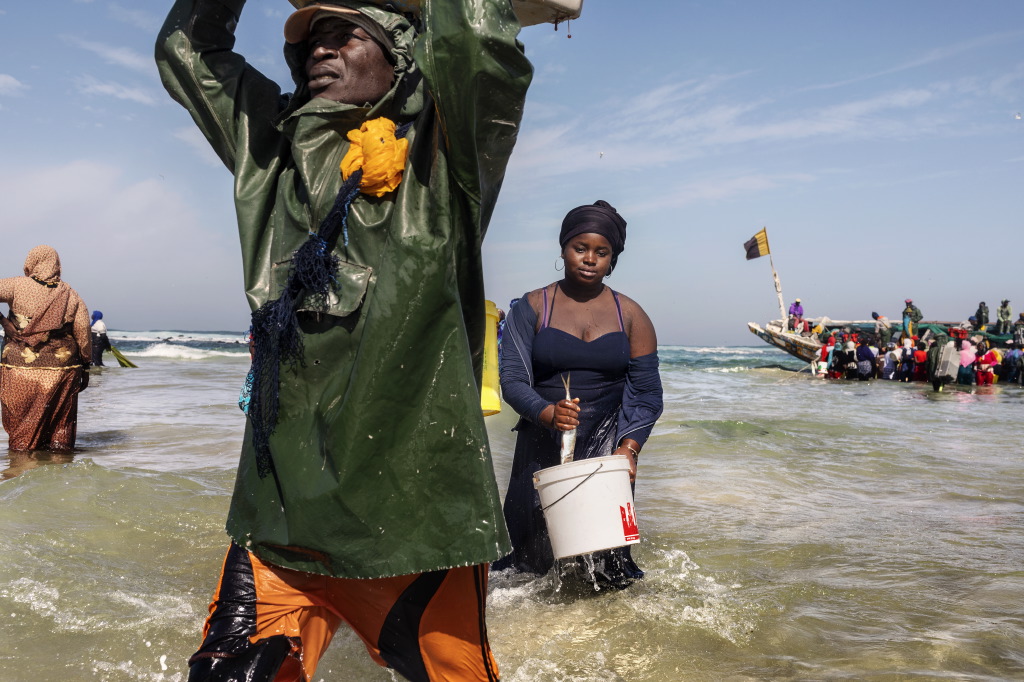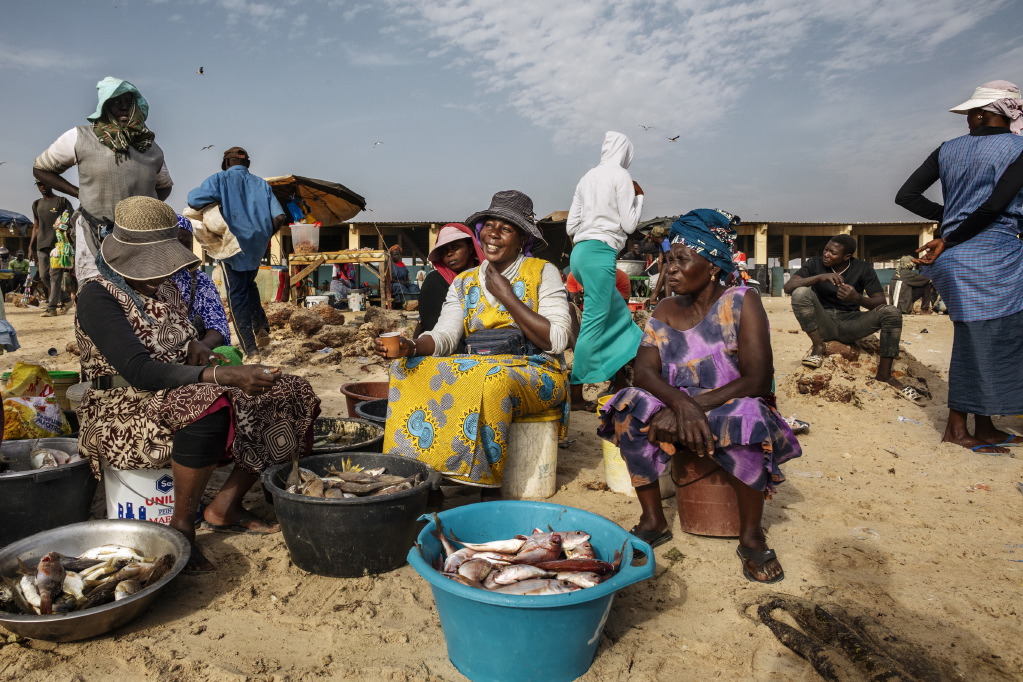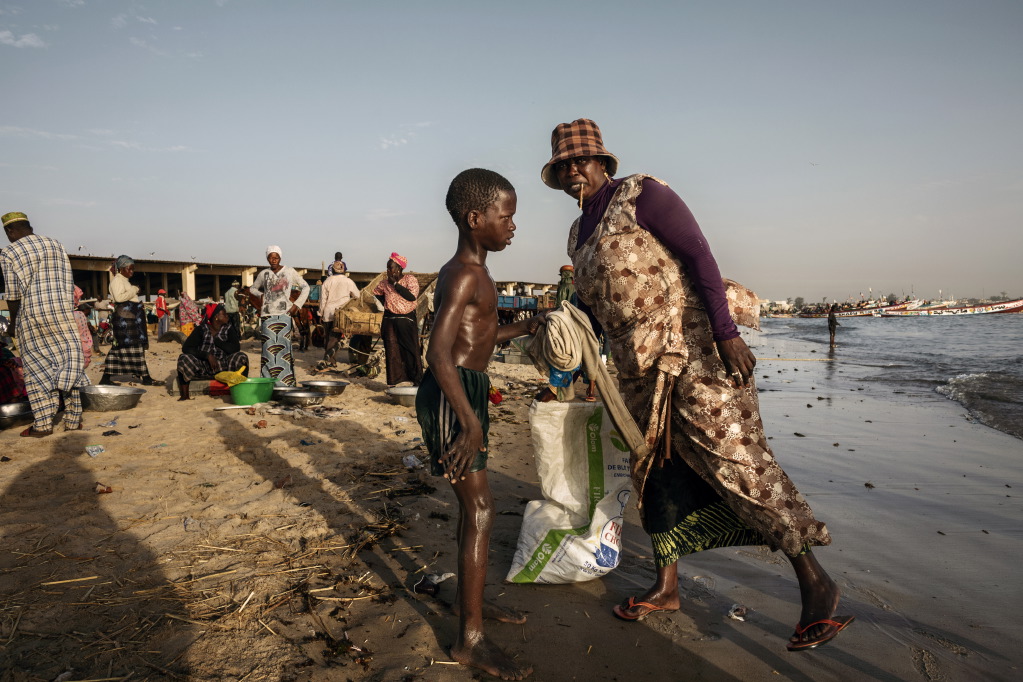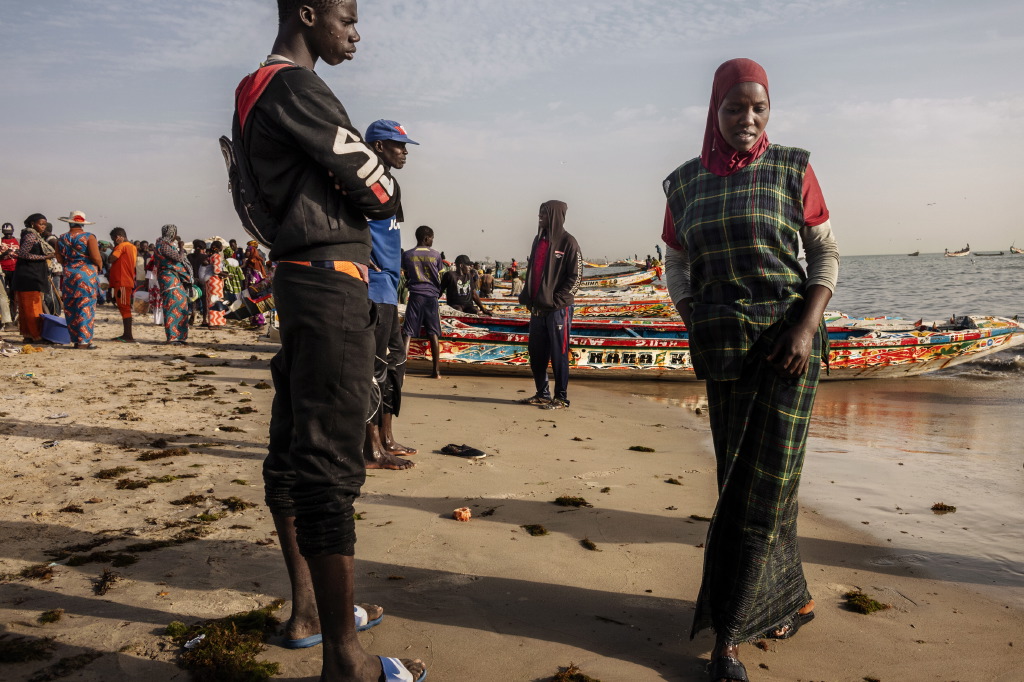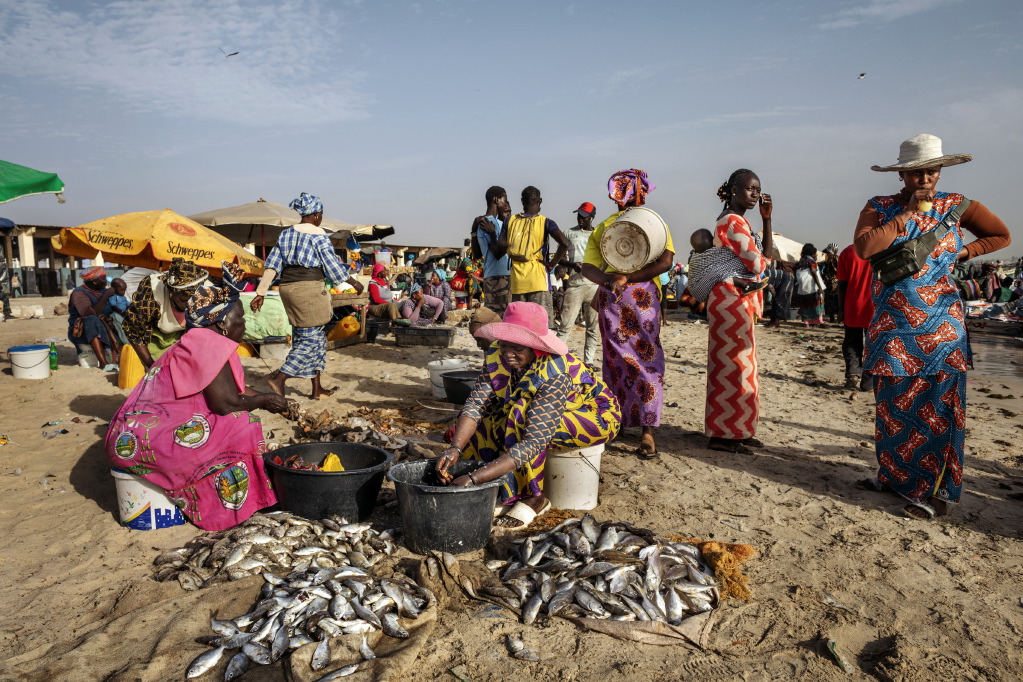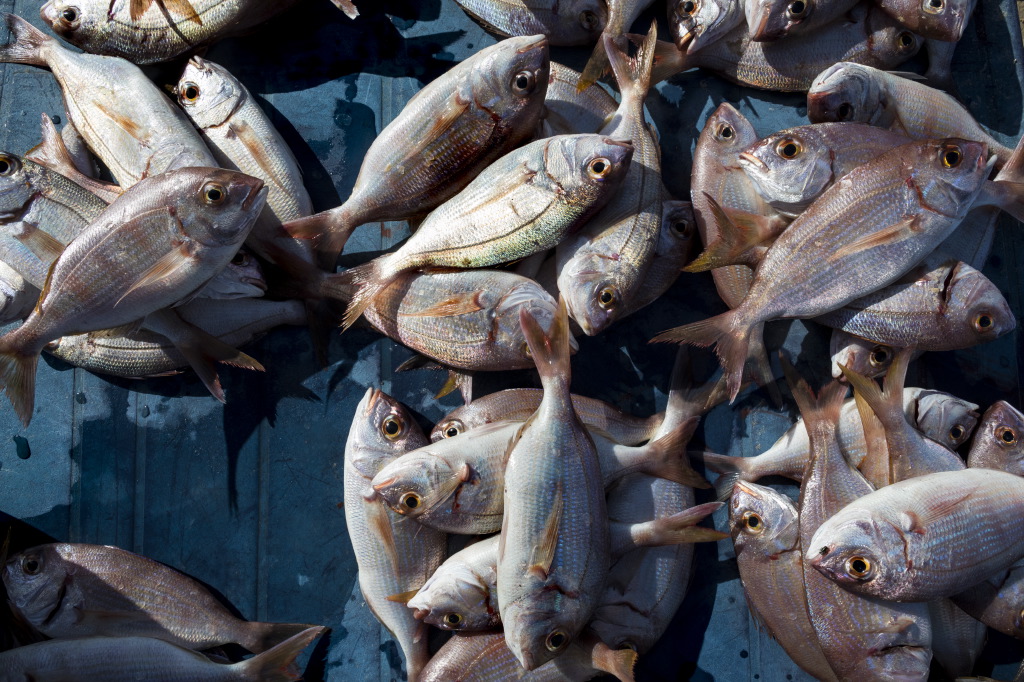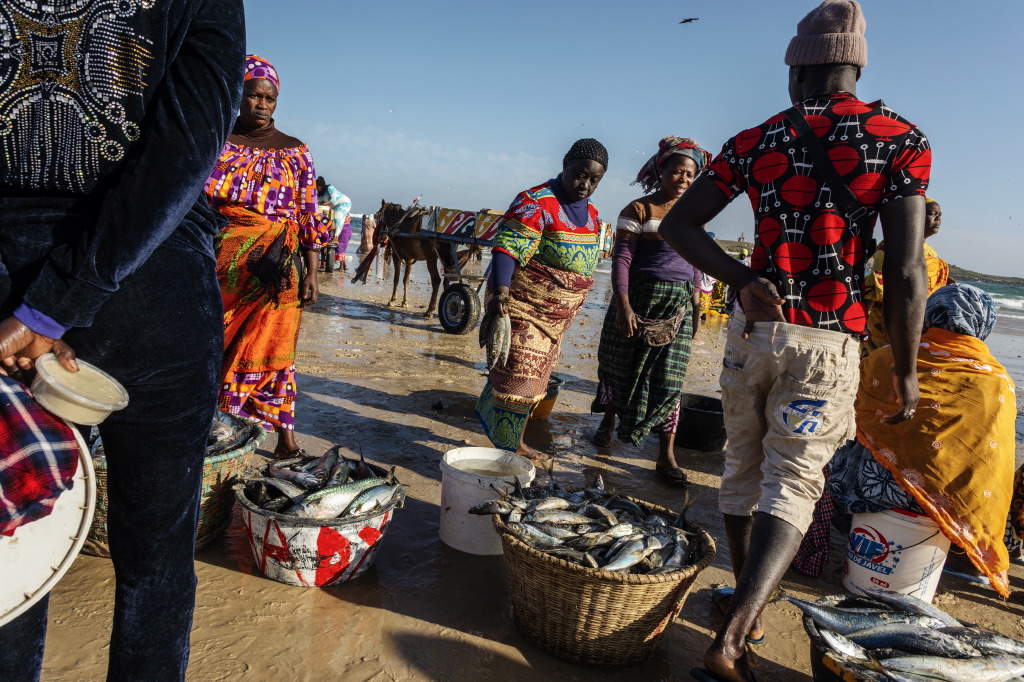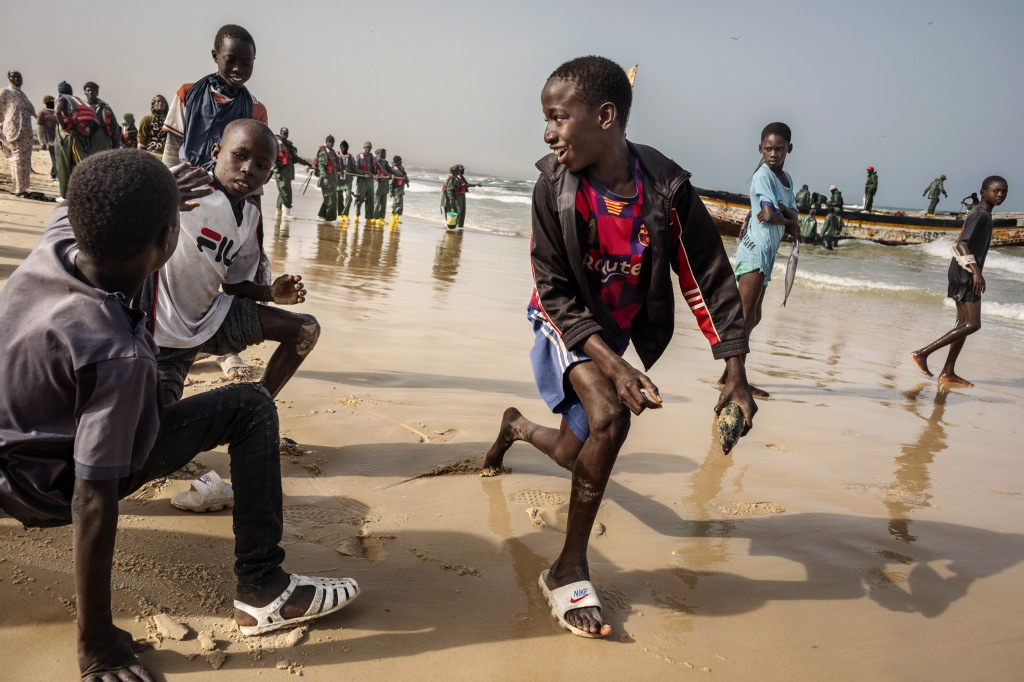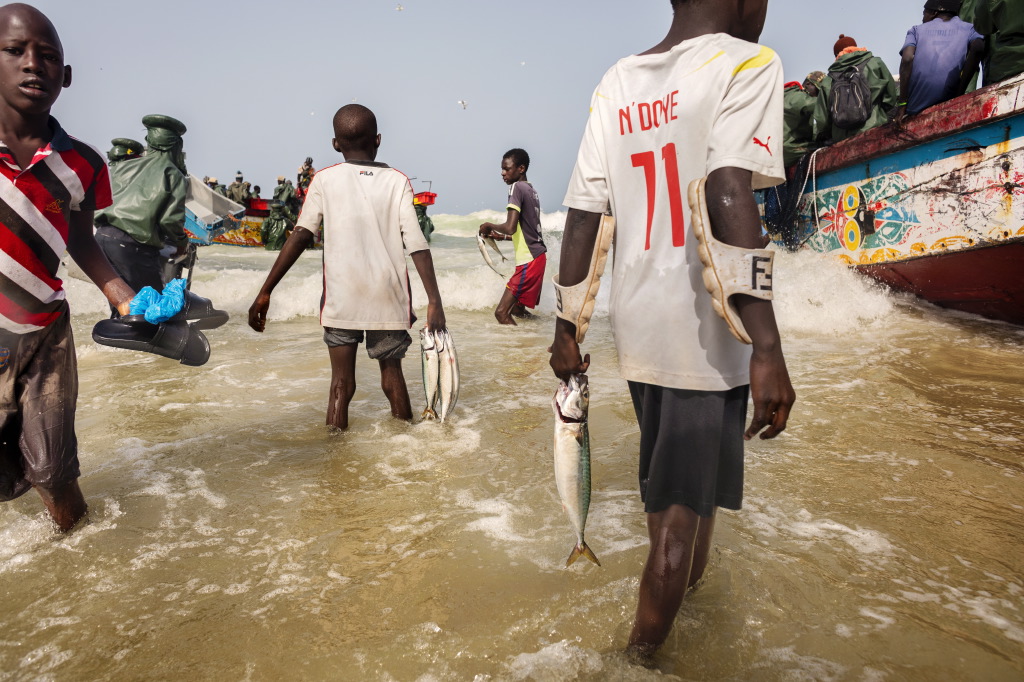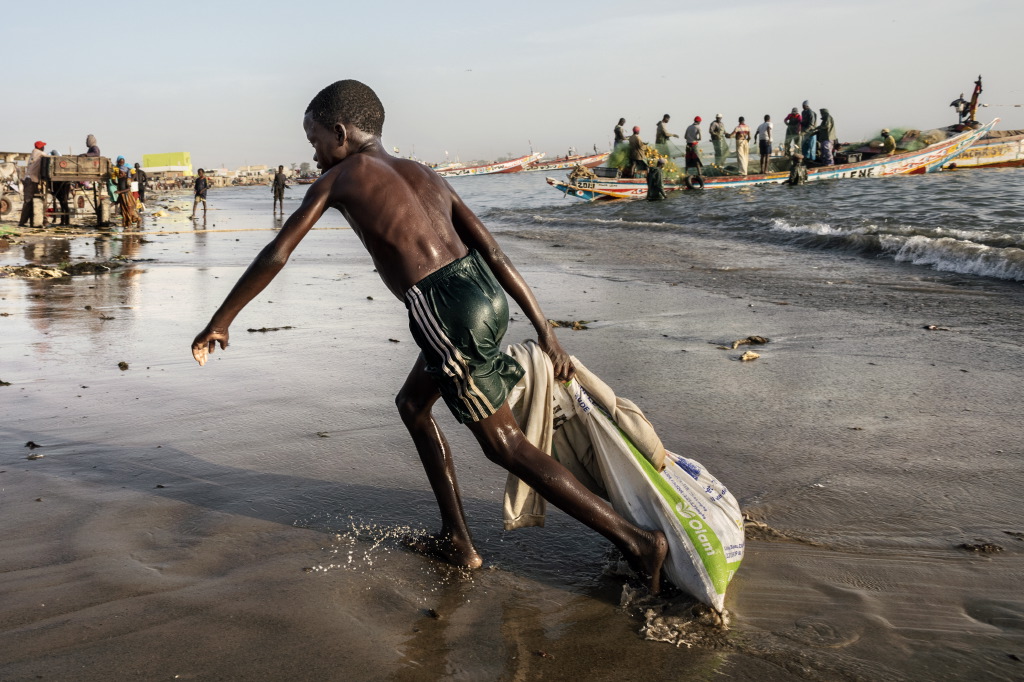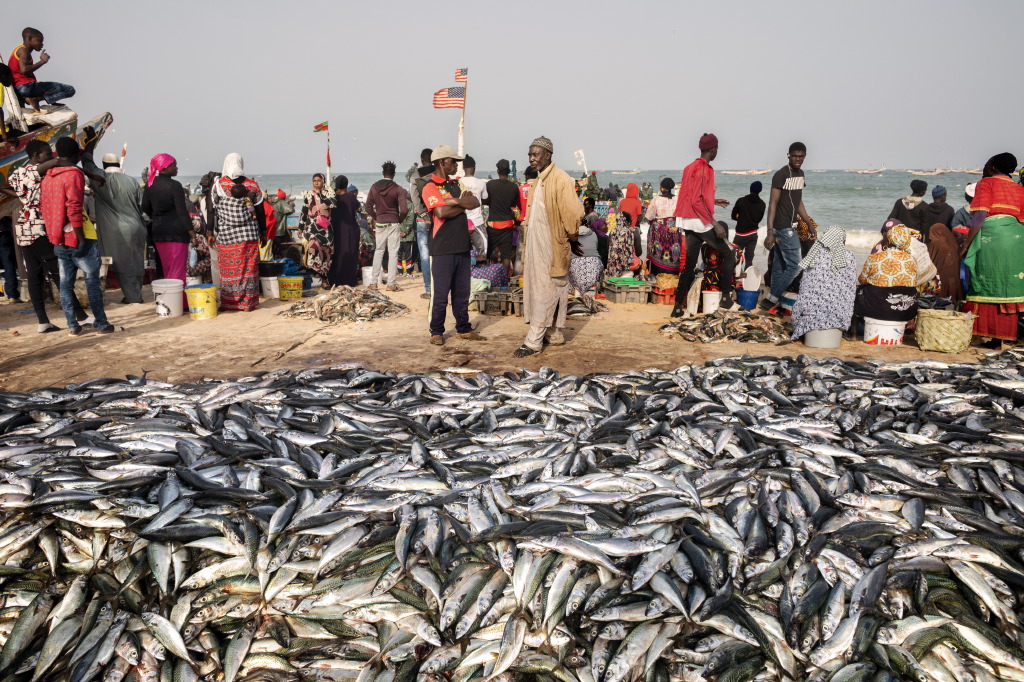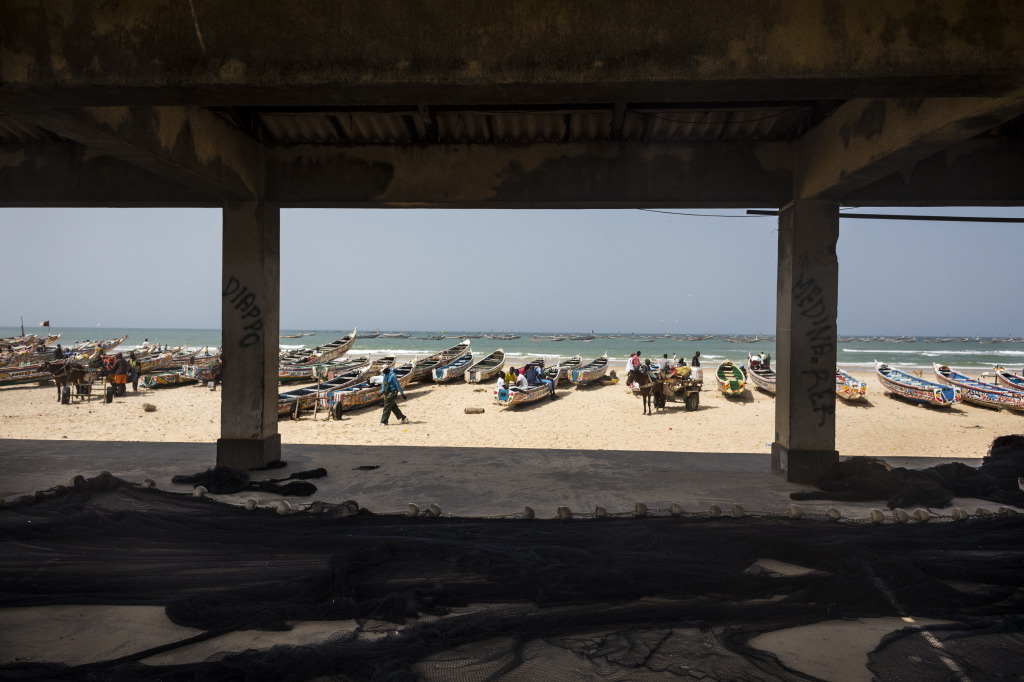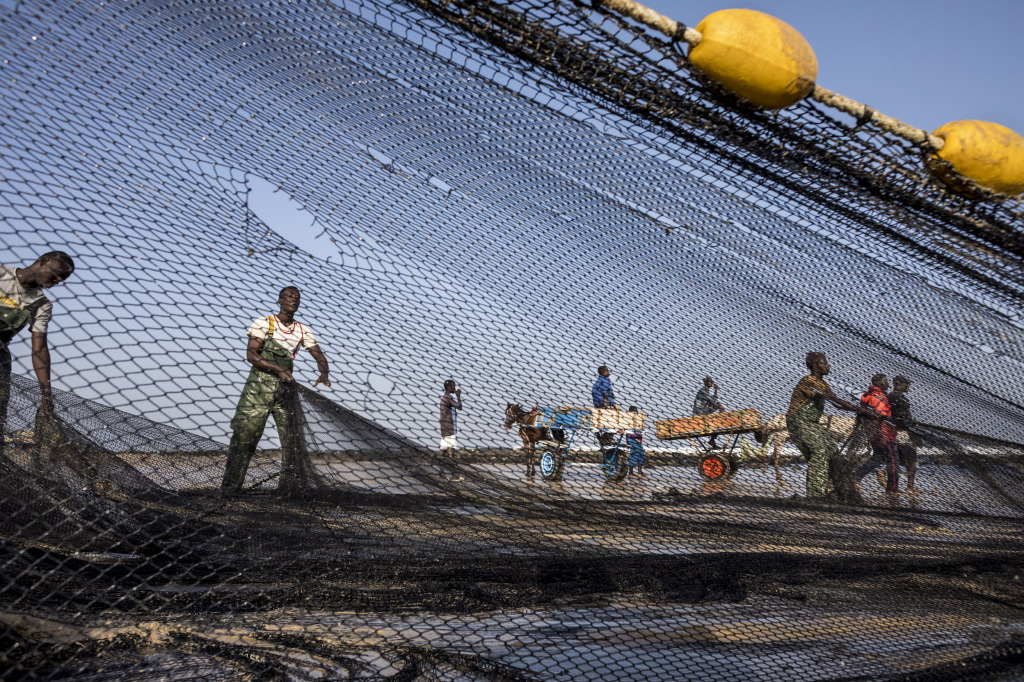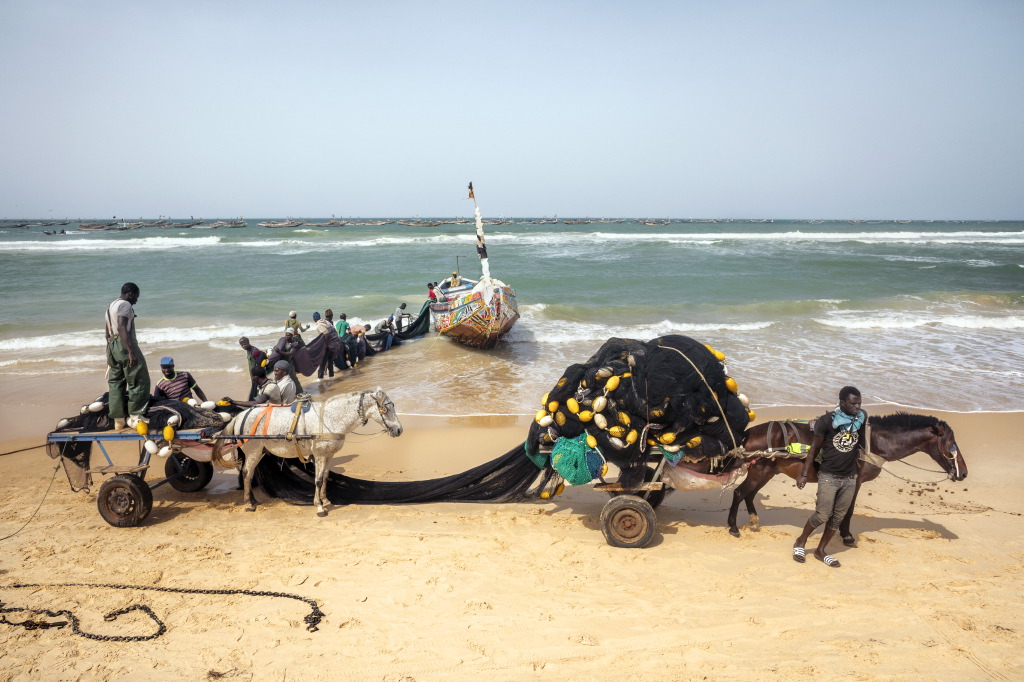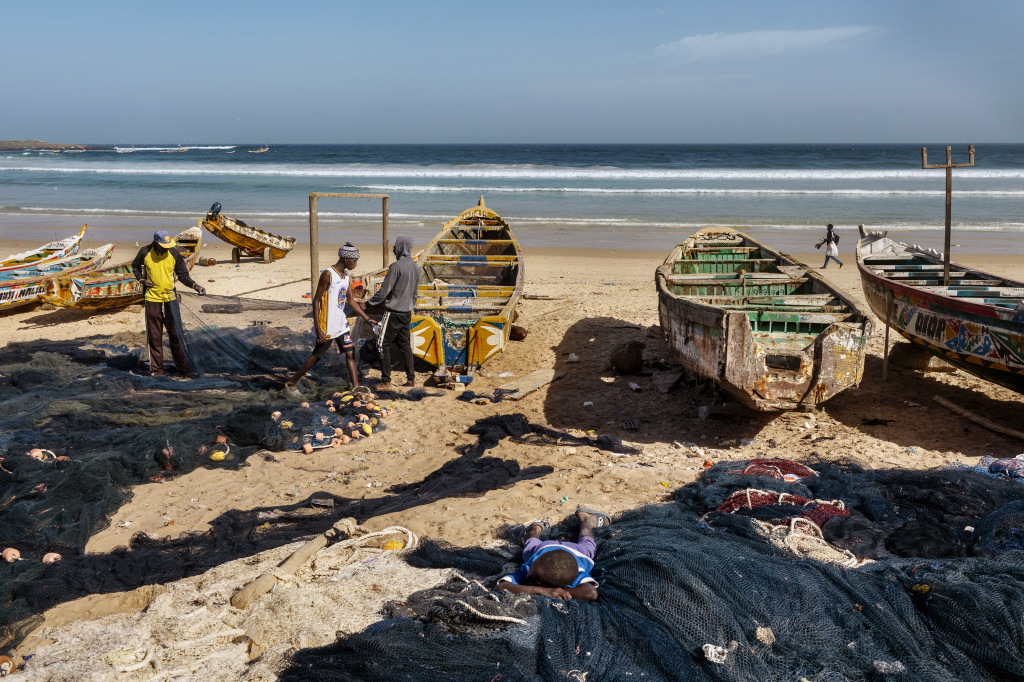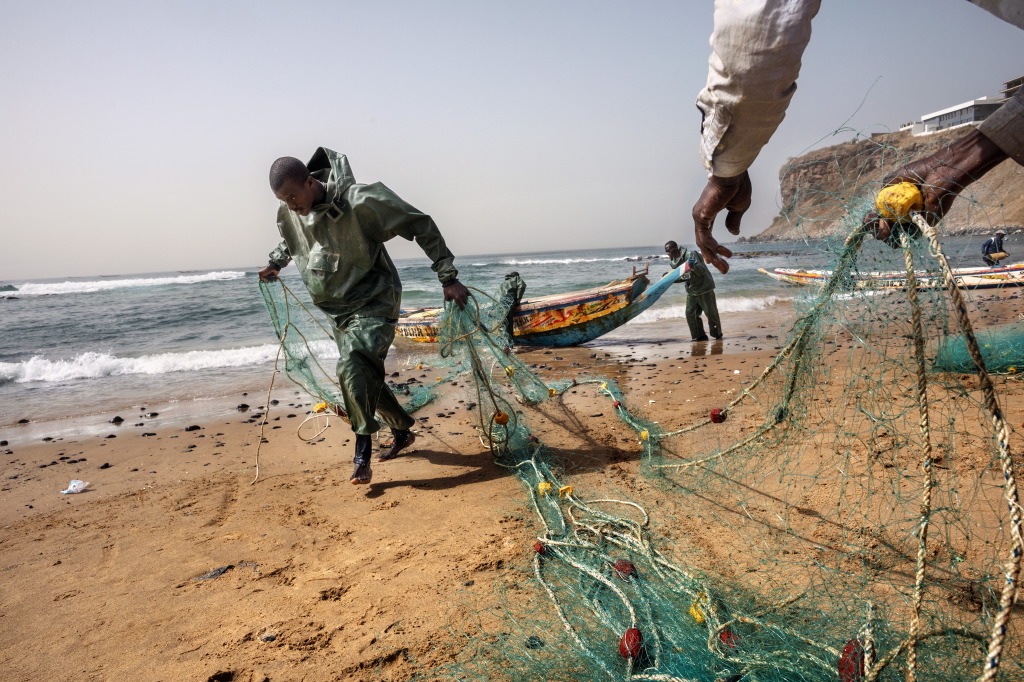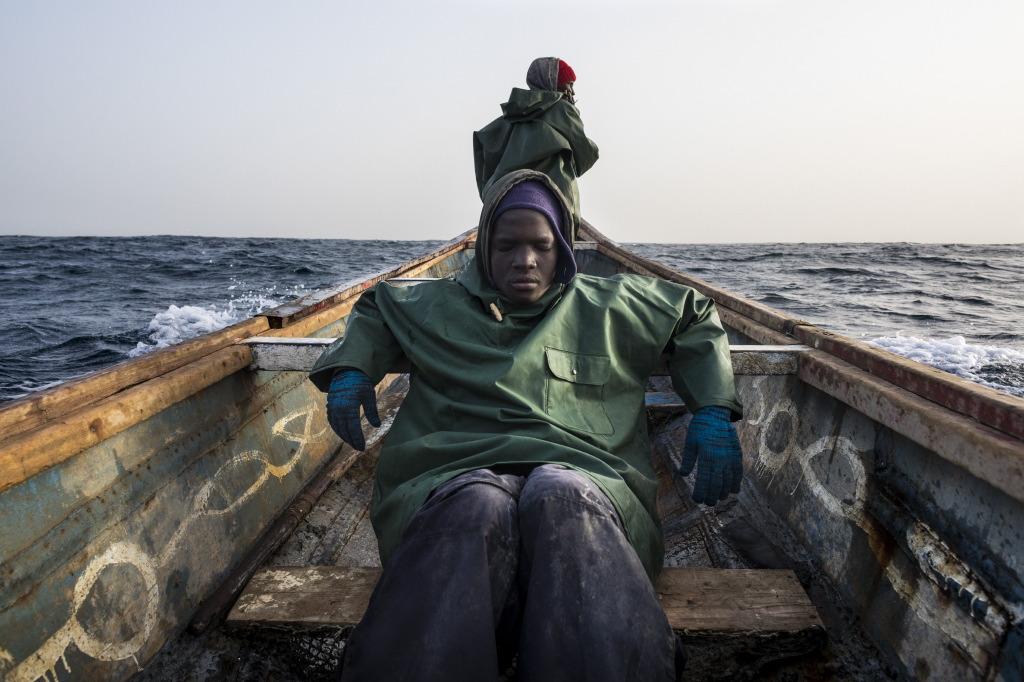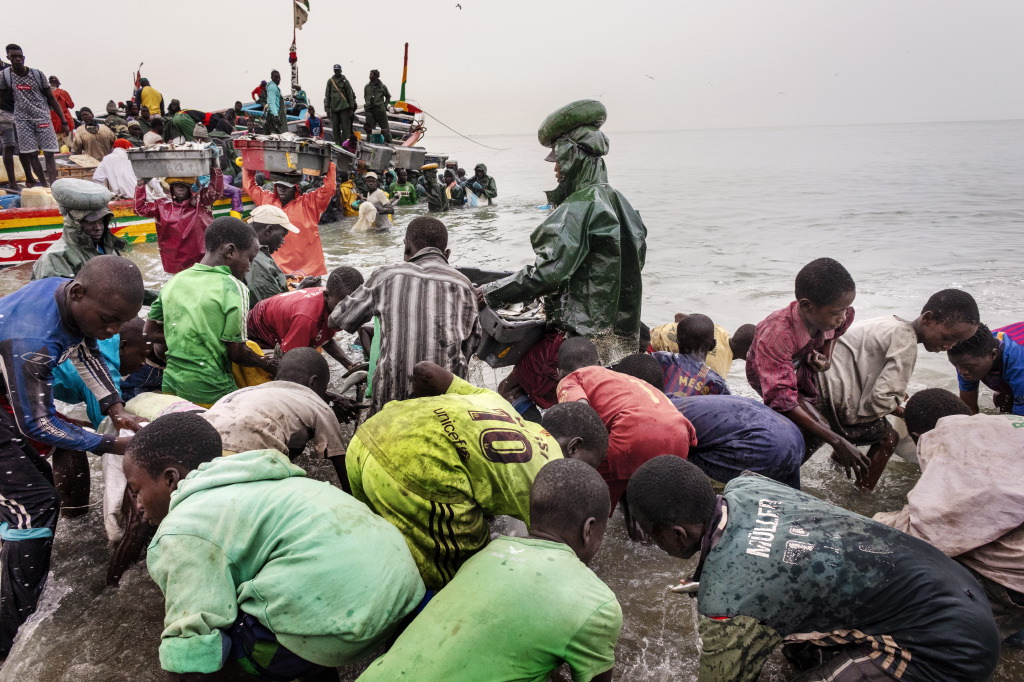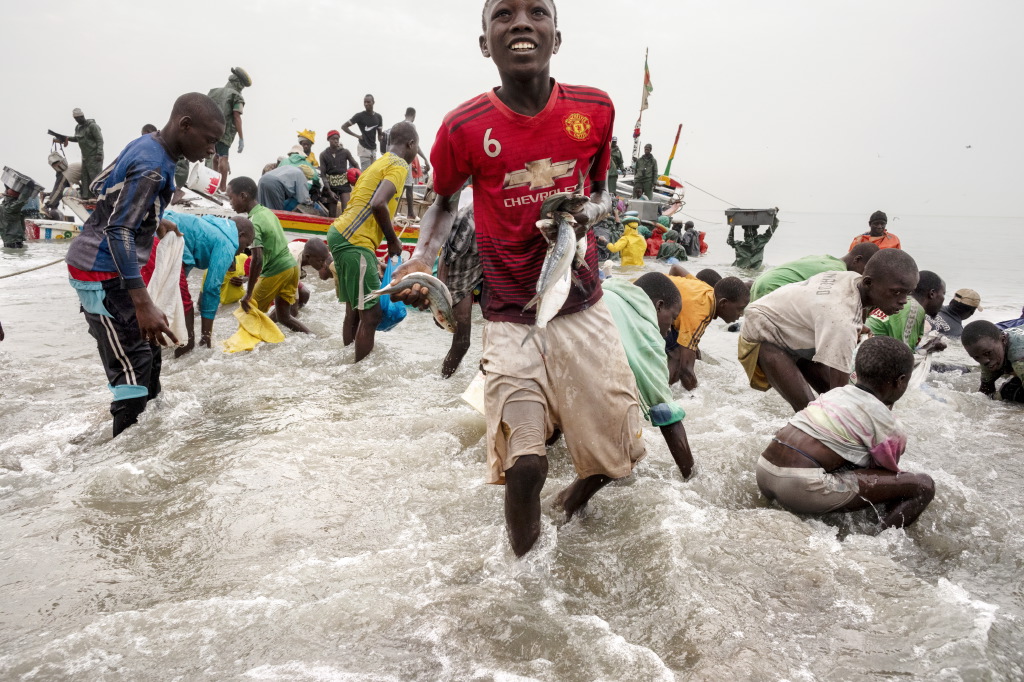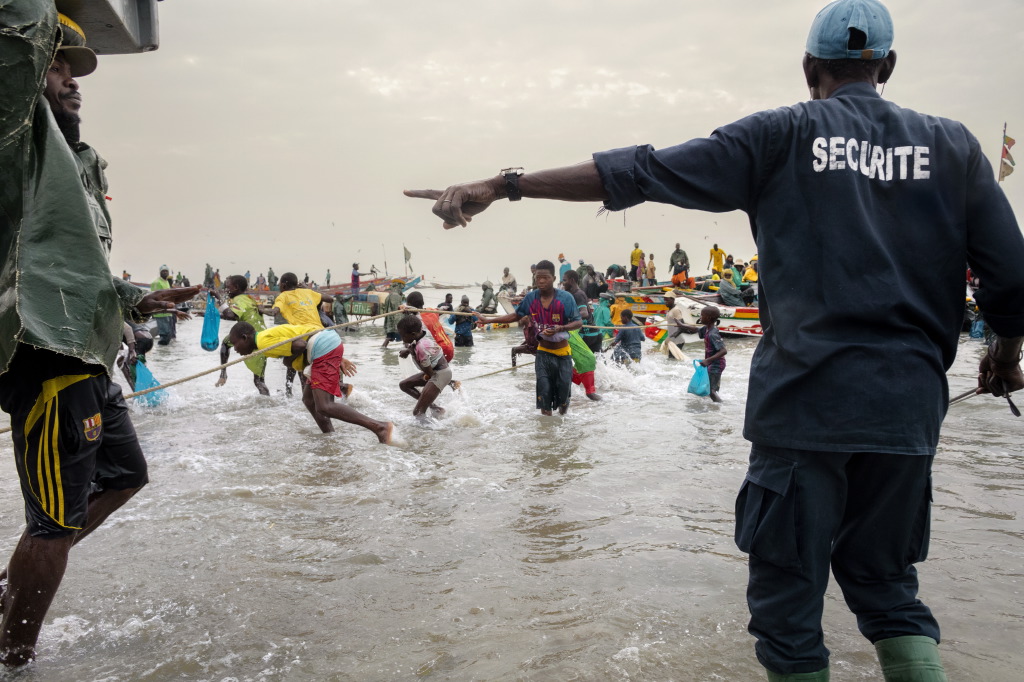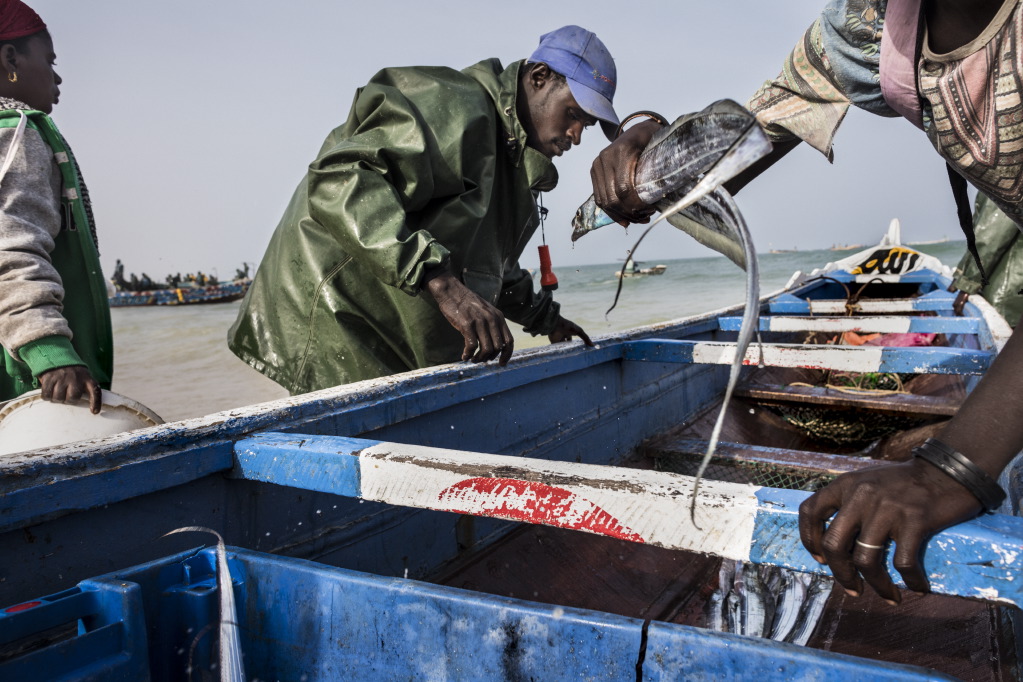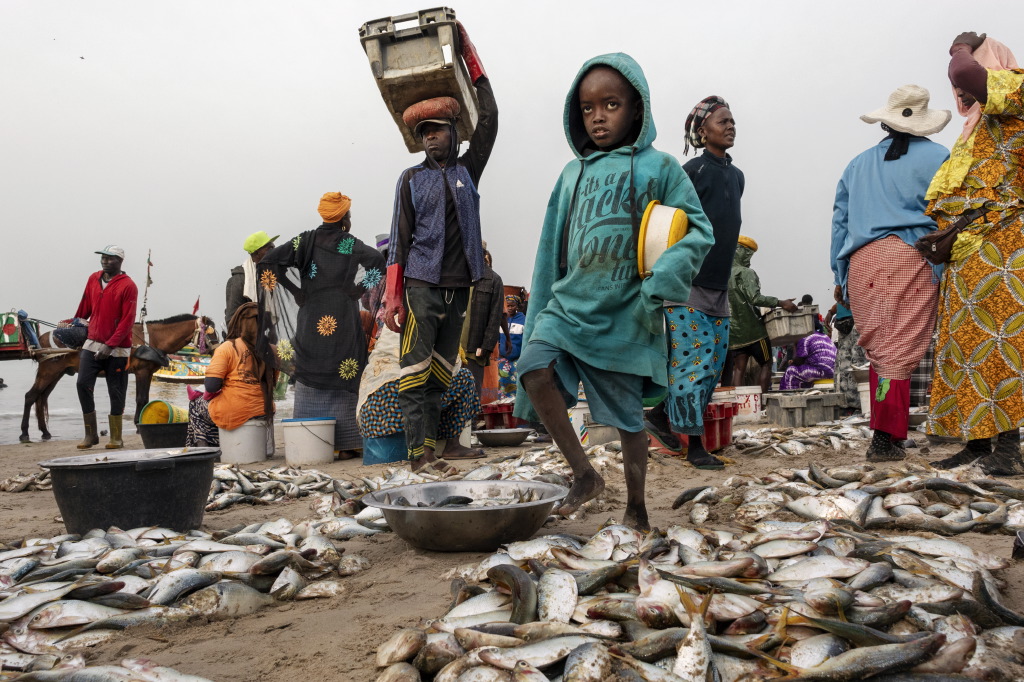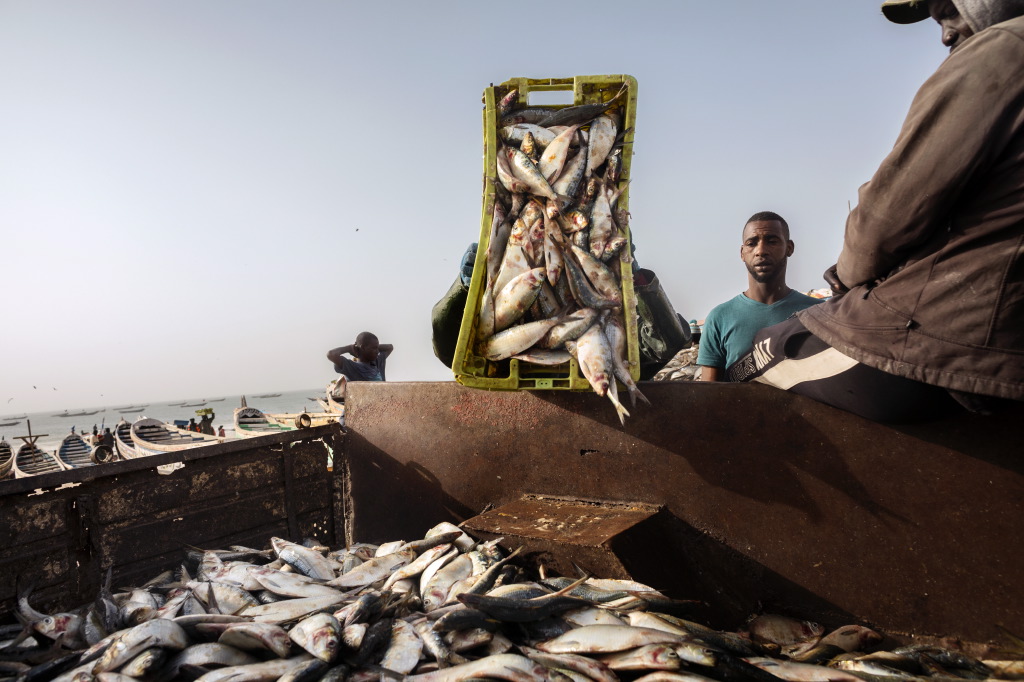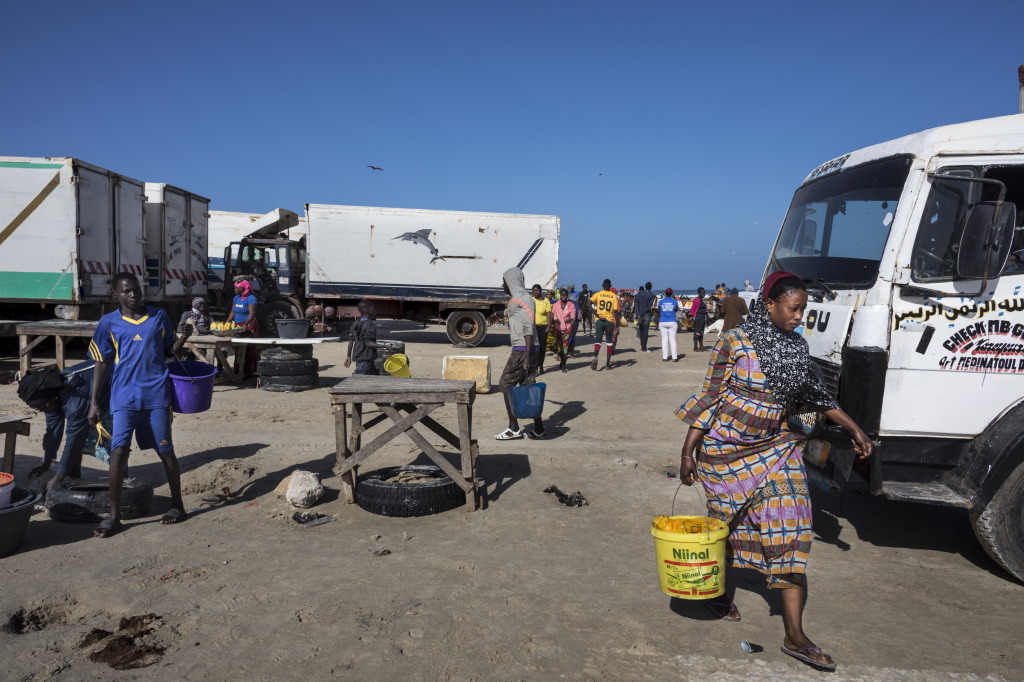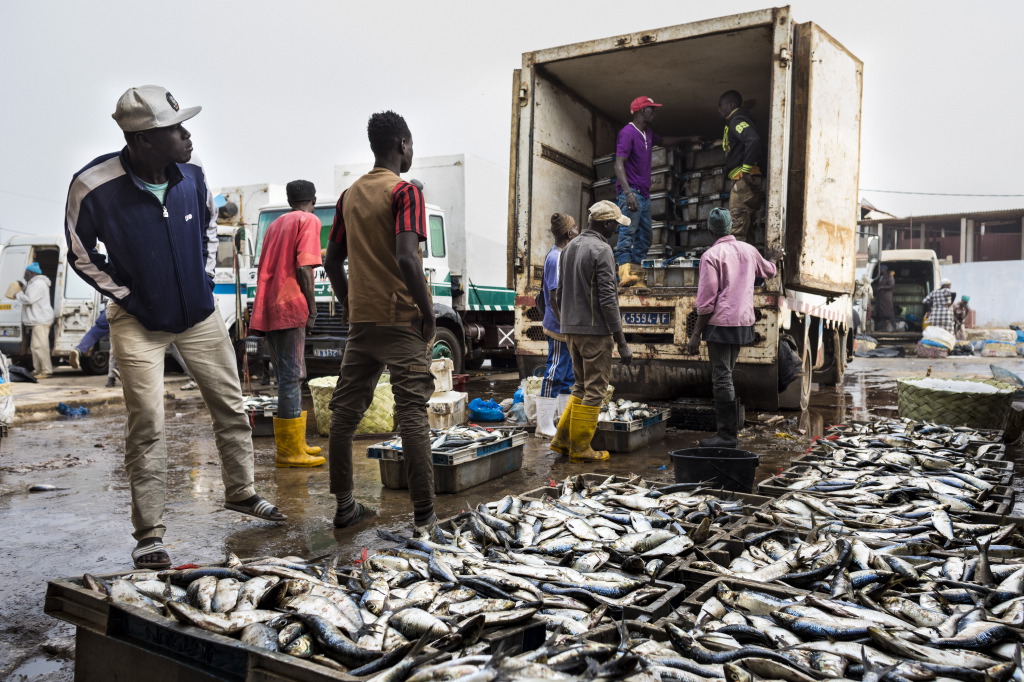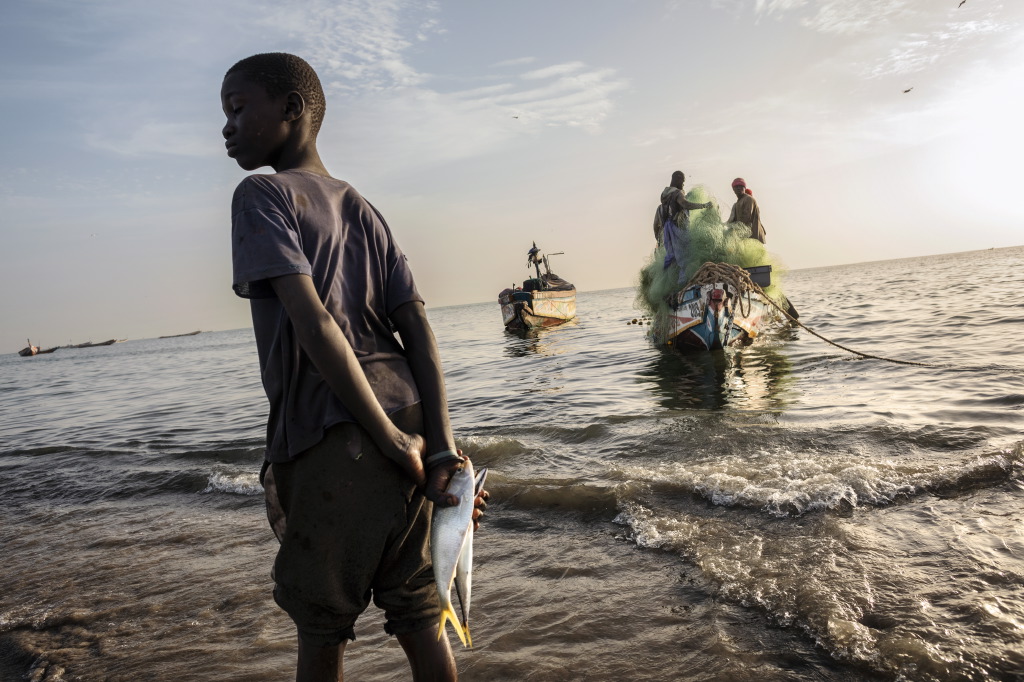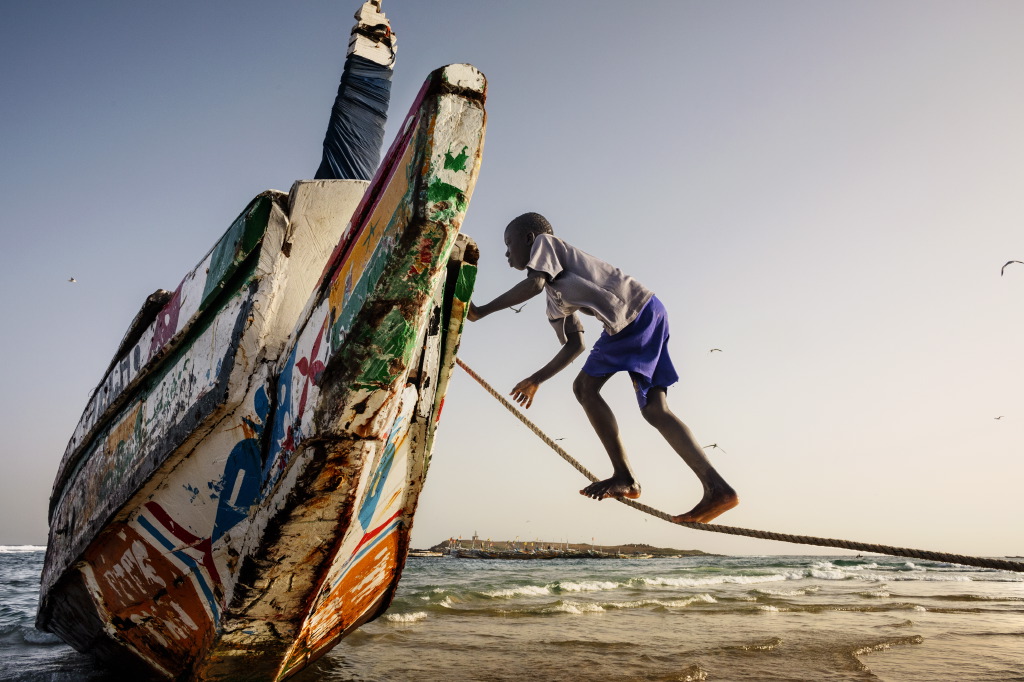X
It is called “Ocean grabbing”, namely the over-exploitation of the sea. As a matter of fact, ocean grabbing endangers the lifestyle, cultural identity and resources access to those communities living on fishing.
Indeed, ocean grabbing practice concentrates the biggest part of fishing rights in the hands of a few companies, thus depriving most of local fishermen of the right to use the very and primary resource for their livelihood and jeopardizing the fish stock and the quality of the sea waters and ecosystem along Western Africa coasts. The rising threat is due to the growing industrial processing of fish, still the main food local coastal people depend on, into oils and fish flour then used by foreign companies dealing with animal feed.
On the beaches of Senegal, women watch pirogues unloading the catch, yet they are not happy. Nets are almost empty, and women are ready for the worst to happen the moment additional foreign plants will start operating.
The situation has become remarkably worse since Chinese, Korean and Russian plants – producing fish flour for cattle and fish breeding in Europe and Asia – construction along the coast has started.
In the past three years, eleven plants got built along the same shores where local fishermen disembark, between Kayar, north of the capital, and Joal, that is one third of the whole Senegalese coast.
In the Country, approximately 600.000 people are directly employed in fishing, and the total amount ends up to 825.000 if we consider also the ones indirectly involved such as women preparing the fish and selling the catch into the local markets.
The socio-economic impact is substantial: the strength of the local economy is harmed and so the very food safety considering fish represents approximately 70% of animal proteins consumed by the local population.
Fishermen colourful pirogues sail the Atlantic Ocean rushing waves for catching the fish. Once they are done, pirogues are headed back and stay berthed on the shore, just nearby the beaches plenty of people.
A slow line of men, wearing their waxed jacket, starts; they enter the water and reach the pirogues, receive from the fishermen a crate full of fish they carry on their heads, back to the beach.
Few crates are left on the beach, other ones are delivered to the market, some dozen meters distant.
The catch is then sorted out based on the original pirogue and fish type; buyers stand by each pirogue and choose the fish they want to buy while other men are busy with loading fish up the lorries. Selected fish baskets are covered with ice and loaded up the refrigerated trucks, then transported to the processing plants producing fish flour for international feed markets. (Text by Benedetta Cortesi).
